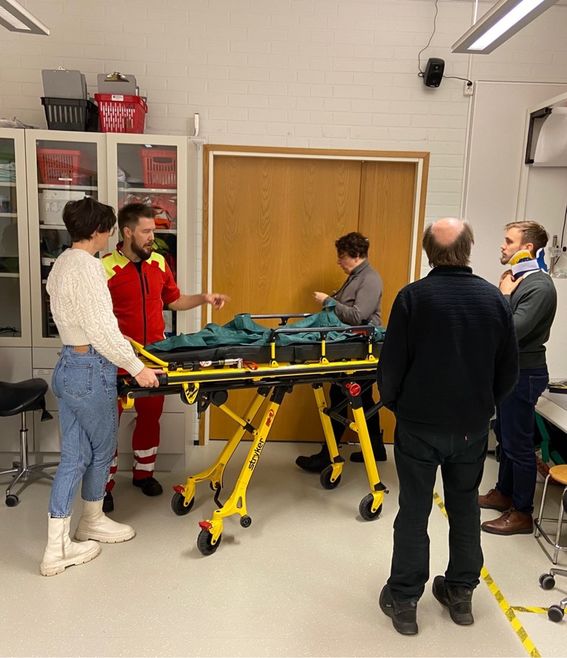Co-designing AMRI Mobile Stroke Units with paramedics

Stroke is a severe case with extensive impact on both the patients and surrounding societies. The low-field MRI is very well suited to detect a stroke. MSUs, which are specialized ambulances that carry an imaging device, can reduce the time to treatment for stroke, improving recovery (Walter et al., 2012). Based on the increasing body of evidence from MSU trials, European Stroke Organization has published a guideline that suggests using MSUs for suspected stroke (Walter et al., 2022). The low field MRI could be another device which could be used in Mobile Stroke Units. As neither the AMRI based ambulance, nor the according emergency protocols currently exist, it is a great opportunity for these to be collaboratively developed.
As technology advances, new imaging tools provide opportunities to innovate in healthcare. Often, a new healthcare protocol is designed around a new technology or medicine, or the other way around- a new technology is created to fit an existing need. Our research study proposes an interdisciplinary approach, where healthcare professionals (or students) and design experts perform a series of simulations with a mobile stroke unit low fidelity prototype.
The historical roots of simulation might be described with the broadest definition of medical simulation: “an imitation of some real thing, state of affairs, or process” for the practice of skills, problem solving, and judgment (Rosen 2008). Virtual worlds, both immersive and Web-based, are at the frontier of innovation in medical education. (Rosen 2008)
This study combines medical simulation principles within design methodology. This way, healthcare professionals and students would have a bigger impact on the design of technologies which they may ultimately use, and designers and engineers to focus their efforts effectively. In addition, we argue that such interdisciplinary research methodology may be valuable in the development of care protocols which are based in emerging technology.
Rosen, K. R. (2008). "The history of medical simulation." Journal of Critical Care 23(2): 157-166.
Walter, S., et al. (2022). "European Stroke Organisation (ESO) guidelines on mobile stroke units for prehospital stroke management." Eur Stroke J 7(1): Xxvii-lix.
Walter, S., et al. (2012). "Diagnosis and treatment of patients with stroke in a mobile stroke unit versus in hospital: a randomised controlled trial." Lancet Neurol 11(5): 397-404.






